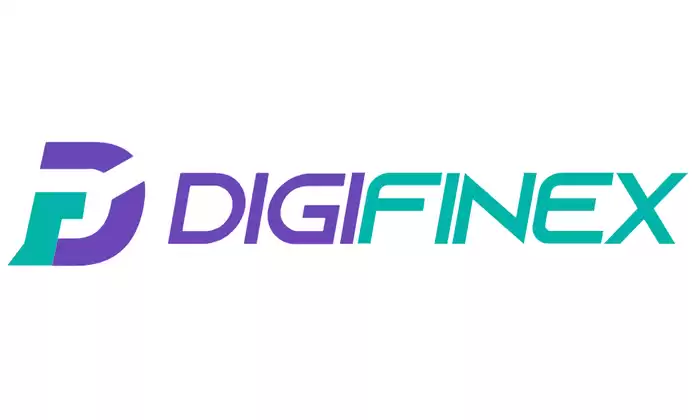-
 Bitcoin
Bitcoin $117700
-1.00% -
 Ethereum
Ethereum $4458
-3.91% -
 XRP
XRP $3.119
0.14% -
 Tether USDt
Tether USDt $1.001
-0.02% -
 BNB
BNB $836.6
-1.56% -
 Solana
Solana $189.5
-3.90% -
 USDC
USDC $0.9998
-0.02% -
 Dogecoin
Dogecoin $0.2335
1.29% -
 Cardano
Cardano $0.9642
1.51% -
 TRON
TRON $0.3539
-1.19% -
 Hyperliquid
Hyperliquid $47.41
-1.84% -
 Chainlink
Chainlink $21.92
-3.28% -
 Stellar
Stellar $0.4286
-0.23% -
 Sui
Sui $3.724
-3.29% -
 Bitcoin Cash
Bitcoin Cash $594.8
-0.78% -
 Ethena USDe
Ethena USDe $1.001
0.04% -
 Hedera
Hedera $0.2501
-2.06% -
 Avalanche
Avalanche $23.96
-4.87% -
 Litecoin
Litecoin $119.0
-2.32% -
 Toncoin
Toncoin $3.473
0.82% -
 UNUS SED LEO
UNUS SED LEO $9.596
0.17% -
 Shiba Inu
Shiba Inu $0.00001301
-0.39% -
 Uniswap
Uniswap $11.03
-0.25% -
 Polkadot
Polkadot $3.935
-2.62% -
 Dai
Dai $1.000
0.01% -
 Bitget Token
Bitget Token $4.564
-1.76% -
 Cronos
Cronos $0.1512
-4.11% -
 Ethena
Ethena $0.7306
-1.09% -
 Pepe
Pepe $0.00001087
-2.68% -
 Aave
Aave $300.2
-4.00%
How to play DigiFinex contract trading
Delving into contract trading on DigiFinex, traders can harness the exchange's advanced platform to capitalize on price fluctuations, utilizing leverage for enhanced potential returns while managing risks judiciously.
Nov 24, 2024 at 12:29 am

Navigating the DigiFinex Contract Trading Arena: A Comprehensive Guide
DigiFinex, a reputable cryptocurrency exchange, ventures into the realm of contract trading, offering traders a dynamic platform to speculate on the price movements of underlying assets with leverage. This detailed guide will delve into the intricacies of contract trading on DigiFinex, empowering traders with the knowledge to navigate this exciting yet complex marketplace.
Prerequisites for Contract Trading on DigiFinex
- Account Registration and Verification: Embarking on the DigiFinex contract trading journey commences with account registration. Provide accurate personal information and complete the necessary verification steps to ensure account security and compliance with regulatory requirements.
- Deposit Funds: Contract trading requires initial capital. Transfer funds into your DigiFinex account through supported fiat or cryptocurrency deposit methods. Ensure that the deposited funds align with the margin requirements for your intended trades.
- Understanding Contract Specifications: Prior to initiating trades, familiarize yourself with the contract specifications. These include contract size, underlying asset, leverage options, expiration dates, and trading hours. Grasping these parameters is crucial for informed decision-making.
Step-by-Step Contract Trading Process on DigiFinex
- Navigating the Contract Trading Interface: Access the DigiFinex contract trading interface and select the desired contract market. The interface displays live market data, including the underlying asset's current price, order book, and historical price charts.
- Selecting the Contract Type: Choose between perpetual contracts, which do not have an expiration date, and quarterly contracts, which expire on a predetermined schedule. Perpetual contracts offer greater flexibility, while quarterly contracts may have lower funding fees.
- Adjusting Leverage: Leverage enables traders to amplify their trading positions with borrowed capital, magnifying potential gains but also amplifying potential losses. Select the appropriate leverage level based on your risk appetite and trading strategy. Higher leverage incurs higher margin requirements.
- Determining Position Size: Calculate the position size commensurate with your account balance, risk tolerance, and leverage. Position size refers to the number of contracts traded. Ensure that your position size aligns with the available margin in your account.
- Placing an Order: Enter the desired order parameters, including order type (limit, market, stop-loss, etc.), quantity, and price. Limit orders allow traders to specify the price at which they wish to execute trades, while market orders execute immediately at the prevailing market price.
- Monitoring Position: After executing a trade, monitor your position actively. Track price movements, adjust leverage if necessary, and manage risk through stop-loss or take-profit orders. Timely adjustments can mitigate losses and secure profits.
- Closing a Position: To exit a contract trade, close your position by placing an opposite order. For example, to close a long position, place a sell order. Ensure that your closing order aligns with the prevailing market price to minimize slippage.
Tips for Enhancing Contract Trading Success
- Start with a Demo Account: Utilize DigiFinex's demo account to practice contract trading with virtual funds, fostering risk-free familiarity with the platform and trading strategies.
- Comprehensive Research and Due Diligence: Thoroughly research the underlying asset, market conditions, and contract specifications. Understanding market dynamics and potential risks is paramount for informed decision-making.
- Risk Management Strategies: Implement robust risk management strategies, such as stop-loss orders, position sizing, and diversification. These measures help mitigate losses and preserve capital in volatile market conditions.
- Leverage Cautiously: Leverage can amplify both gains and losses. Use leverage judiciously and within your risk tolerance. Consider the potential impact of adverse price movements on your account equity.
- Continuous Education: The contract trading landscape is constantly evolving. Stay abreast of market developments, new trading strategies, and industry best practices. Continuous learning empowers traders to adapt and navigate the ever-changing market dynamics effectively.
Disclaimer:info@kdj.com
The information provided is not trading advice. kdj.com does not assume any responsibility for any investments made based on the information provided in this article. Cryptocurrencies are highly volatile and it is highly recommended that you invest with caution after thorough research!
If you believe that the content used on this website infringes your copyright, please contact us immediately (info@kdj.com) and we will delete it promptly.
- Kazakhstan's Crypto Leap: Bitcoin ETF and Central Asia's Digital Finance Future
- 2025-08-13 12:45:19
- BlockDAG Presale Blazes Past $371M: Fundraising Frenzy Fuels Crypto Sensation
- 2025-08-13 13:05:21
- Meme Coins: Chasing the 2025 Surge – Which Will Moonshot?
- 2025-08-13 10:25:23
- Bitcoin's Wild Ride: Rally, Pullback, and What's Next
- 2025-08-13 10:25:23
- Bitcoin, Bitmax, and Institutional Demand: A New Era of Crypto Investment
- 2025-08-13 10:45:12
- Solana, ROAM, and Airdrops: What's the Buzz in 2025?
- 2025-08-13 11:35:13
Related knowledge

Is it possible to adjust the leverage on an open position on KuCoin?
Aug 09,2025 at 08:21pm
Understanding Leverage in KuCoin Futures TradingLeverage in KuCoin Futures allows traders to amplify their exposure to price movements by borrowing fu...

What cryptocurrencies are supported as collateral on KuCoin Futures?
Aug 11,2025 at 04:21am
Overview of KuCoin Futures and Collateral MechanismKuCoin Futures is a derivatives trading platform that allows users to trade perpetual and delivery ...

What is the difference between realized and unrealized PNL on KuCoin?
Aug 09,2025 at 01:49am
Understanding Realized and Unrealized PNL on KuCoinWhen trading on KuCoin, especially in futures and perpetual contracts, understanding the distinctio...

What different order types are available to use on KuCoin Futures?
Aug 13,2025 at 11:35am
Understanding Order Types on KuCoin FuturesKuCoin Futures offers a comprehensive range of order types to accommodate different trading strategies and ...

How does KuCoin Futures compare against Binance Futures in terms of features?
Aug 09,2025 at 03:22am
Trading Interface and User ExperienceThe trading interface is a critical component when comparing KuCoin Futures and Binance Futures, as it directly i...

How can I manage risk when applying high leverage on KuCoin?
Aug 13,2025 at 11:35am
Understanding High Leverage and Its Implications on KuCoinHigh leverage in cryptocurrency trading allows users to control larger positions with a rela...

Is it possible to adjust the leverage on an open position on KuCoin?
Aug 09,2025 at 08:21pm
Understanding Leverage in KuCoin Futures TradingLeverage in KuCoin Futures allows traders to amplify their exposure to price movements by borrowing fu...

What cryptocurrencies are supported as collateral on KuCoin Futures?
Aug 11,2025 at 04:21am
Overview of KuCoin Futures and Collateral MechanismKuCoin Futures is a derivatives trading platform that allows users to trade perpetual and delivery ...

What is the difference between realized and unrealized PNL on KuCoin?
Aug 09,2025 at 01:49am
Understanding Realized and Unrealized PNL on KuCoinWhen trading on KuCoin, especially in futures and perpetual contracts, understanding the distinctio...

What different order types are available to use on KuCoin Futures?
Aug 13,2025 at 11:35am
Understanding Order Types on KuCoin FuturesKuCoin Futures offers a comprehensive range of order types to accommodate different trading strategies and ...

How does KuCoin Futures compare against Binance Futures in terms of features?
Aug 09,2025 at 03:22am
Trading Interface and User ExperienceThe trading interface is a critical component when comparing KuCoin Futures and Binance Futures, as it directly i...

How can I manage risk when applying high leverage on KuCoin?
Aug 13,2025 at 11:35am
Understanding High Leverage and Its Implications on KuCoinHigh leverage in cryptocurrency trading allows users to control larger positions with a rela...
See all articles

























































































